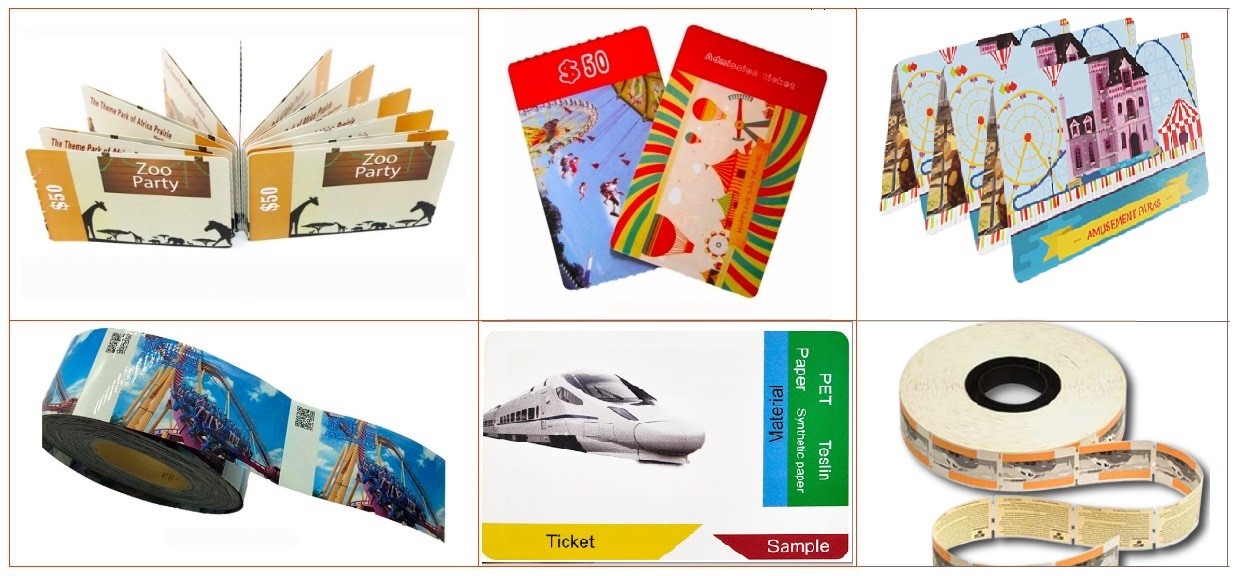Tickets for large-scale events are mostly securities and expensive. The huge profits drive counterfeit ticket dealers and even internally ill-informed employees to do everything possible to counterfeit tickets; important conference tickets with high security requirements are also subject to ticket dealers. Fake reselling has caused serious box office losses to the organizer, and the safety of the event cannot be effectively guaranteed. For this reason, ticket anti-counterfeiting has become a top priority for the organizers.

Through years of vigorous promotion of rfid anti-counterfeiting tickets and many high-quality cases, rfid radio frequency automatic identification technology has been recognized by the people in recent years. More and more non-professional rfid technology companies have begun to get involved in rfid ticket anti-counterfeiting applications.
In the actual application of ticket anti-counterfeiting, the anti-counterfeiting requirements of tickets for performances, exhibitions, important conferences, and sports events are relatively high. It is not only convenient for the audience to check the authenticity of the NFC function of the smart phone, but also the entrance inspection must not interfere with each other and be accurate and efficient. At the same time, the installed gates, mobile ticket inspection machines, etc. have inspection functions such as compatible ID cards, ICs, and IDs. High-frequency label anti-counterfeiting technology has won praise from most end users. Compared with UHF tags, high-frequency tags meet these requirements well.

Shenzhen SunRise Security Technology Co., Ltd., which focuses on the application of rfid ticket system, has been in the rfid ticket industry for more than ten years and has rich experience. rfid ticket anti-counterfeiting has deep technical precipitation. The application of high frequency and ultra high frequency in rfid electronic anti-counterfeiting tickets has been deeply compared and analyzed. After repeated comparisons, it is not recommended to use relatively cheap UHF tags in the ticket anti-counterfeiting system of high-standard large-scale events. Puxin Technology will consider customer safety, anti-counterfeiting accuracy, ease of authenticity query, compatibility of detection, etc., and will not hesitate to reduce its own profits, relying on its own accumulated mass production and efficient management for many years. The production of finished rfid tickets is reduced to lower prices (even cheaper than using UHF tags). Puxin Technology insists on using high-standard and higher-priced rfid high-frequency electronic tags with customer first and quality first.
Compared with UHF tags, high-frequency tags have the following advantages:
The one-to-one near-field inductive coupling of high-frequency tags prevents mutual interference between high-frequency tags;
The near-field induction characteristic of the high-frequency tag makes the audience intensive and will not make mistakes;
High-frequency tag electromagnetic induction coupling has strong ability to resist liquid and metal interference;
High-frequency tags maintain a high reading accuracy rate;
The relatively short reading distance of high-frequency tags brings good privacy and security;
High-frequency tag compatibility is good, the reader can be compatible with reading ID cards, IC cards, ID cards, NFC tags, etc.;
High-frequency tag viewers can check the authenticity of tickets through the NFC function of their smartphones;
The low energy consumption of high-frequency label inspection equipment makes the hand-held ticket inspection machine long standby time, and the inspection equipment is perfect and cheap;
High-frequency tags are not easy to be destroyed by undesirable molecules, and UHF tags are easily destroyed by undesirable molecules through high-power reading and writing equipment at a long distance.
Some businesses claim that UHF tags have "short-range UHF RFID tags" performance, purely in order to seize business opportunities and do not hesitate to mislead consumers. Because UHF tags have fewer antennas than high-frequency tags, it is relatively simple to produce, and UHF tags are cheaper than high-frequency tags. In order to obtain greater benefits, UHF tags are used in special application environments at high-frequency prices. The tickets are in anti-counterfeiting.
In terms of signal interference, both HF and UHF RFID systems are very dependent on the communication environment between the reader and the tag. However, the near-field inductive coupling of high-frequency technology reduces potential wireless interference, making high-frequency technology a strong "immunity" against environmental noise and electromagnetic interference (EMI). The UHF uses the principle of electromagnetic emission, so it is more susceptible to electromagnetic interference. At the same time, metal can reflect signals, and water can absorb signals. These factors will interfere with the normal function of the tag. Even though some UHF tags with improved technology (such as Gen2) have excellent performance in preventing interference from metals and liquids, UHF tags are still much inferior compared with high-frequency tags.
From the perspective of the overall cost of RFID chips and including readers, electronic tags, middleware, system maintenance, etc., the price of UHF RFID systems is still high, and the project cost is an important indicator for end users to weigh the project investment income. The cost bottleneck of UHF systems is an important factor restricting the development of China's UHF market, especially in some markets where single-product-level applications are more expected.